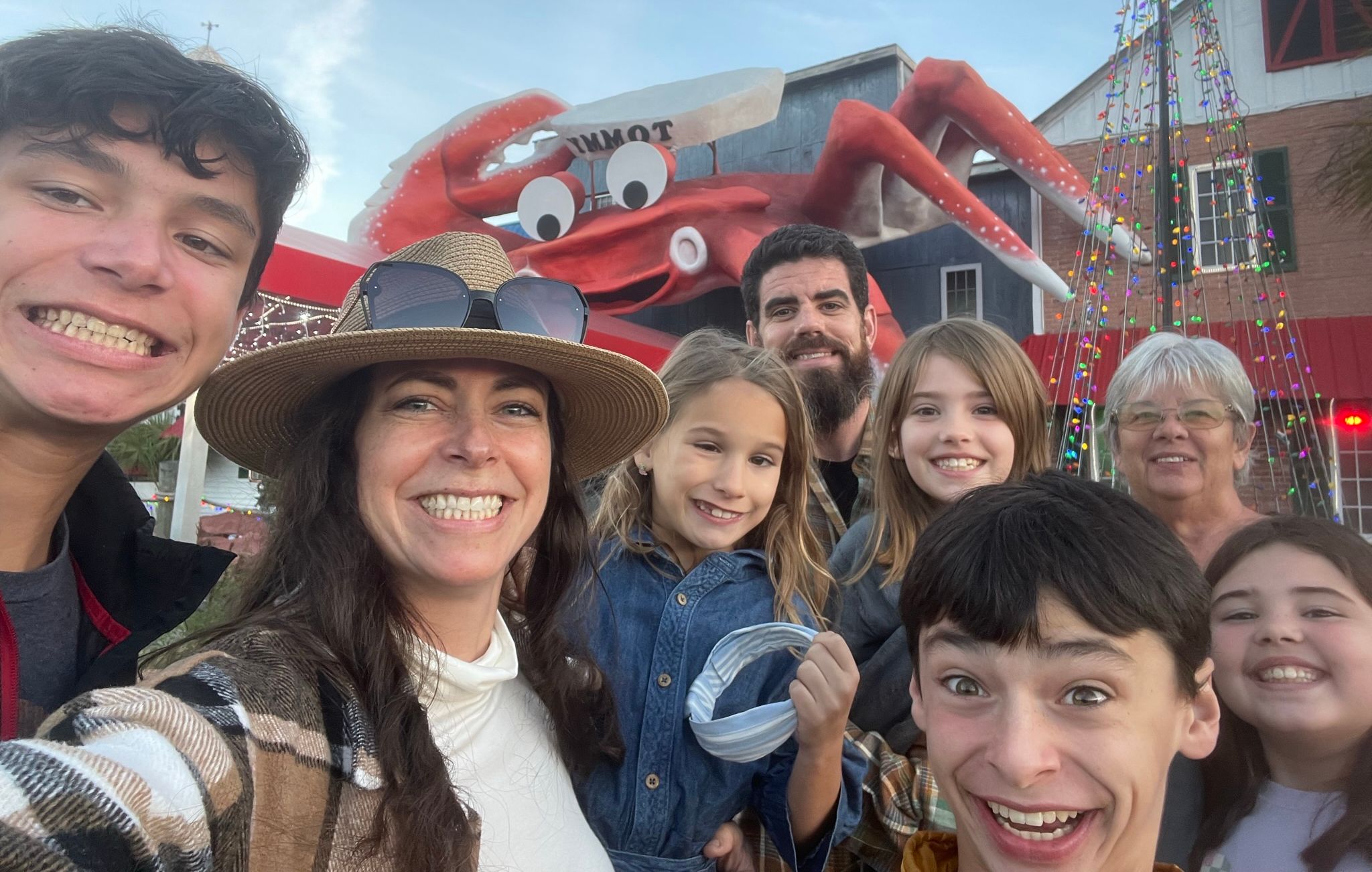A divorced mom cleverly asked daycare workers to hook her up with a 'cute' dad. It worked.
She “manifested” her man.
Sean and Dorilee Lavin feel complete.
Dorilee Lavin, 39, was a divorced mother of 3 living in Vermont. When she was ready to find her next relationship, she made a list of characteristics she wanted in her next husband. “I manifested him hard,” Dorilee, 39, told Today.com.
Three days later, she saw a tall, dark-haired man named Sean walking his 2 daughters to school and hoped he was single. “It was the sweetest thing ever, like an image you’d see in a magazine,” she recalled. "They had such a happy energy."
After some research, she discovered that he was single, too. Unfortunately, their paths didn’t cross and the school year was nearing its end. "I never got the chance to connect with him, but the [after-school care] was tired of hearing me talk about him to them," she confessed in a TikTok video with over 1.7 million views.
“'OK, Dorilee, we can't have you be bummin' all summer, so we're gonna give him your phone number,” she recalled them saying.
#stitch with @Jackie Gansky
@dailydoseofdorilee #stitch with @Jackie Gansky #strategic #interested #perfectman #husbandmaterial #howwemet #waitforthegreats
So, on the last day of summer break, the employees at the after-school care program agreed to give him her phone number. Before he got the digits, she ran into him while she was leaving the center and didn’t think she made a great first impression.
“It was total verbal diarrhea. Like no pickup lines, no nothing here. I actually thought I scared him,” Dorilee shared in the video. Luckily for Dorilee, she didn’t. About an hour later, he texted her and they agreed to go on a date that Saturday night.
They eloped in the woods 111 days after their first date. Dorilee believes she “manifested” Sean, he thinks he may have done the same for her.
“I later learned he had a dream of a woman with long dark curly hair and a captivating energy,” she told Today.com. “Then, when he saw me, he was blown away because I was the woman from his dream. I didn’t believe him when he first told me the story, then he showed me the texts. He had messaged his friends about the dream.”
Dorilee still can’t believe that her metaphysical request was honored. "It hit me hard about two months ago that I'm literally living the life with a partner I called in from the universe years ago and I balled like a baby,” she wrote in the comments.
Their kids get along very well and they’ve worked hard to create positive and peaceful relationships with their exes.

The Lavin clan with Sean's mom, Tracy Gandin.
via Dorilee and Sean Lavin (used with permission)
Dorilee and Sean told Upworthy that there are 3 “vital” elements to creating a successful co-parenting relationship: clear communication, open dialogue and always acting in the best interest of the kids.
It’s also essential to leave the past in the past.
“Letting go of any premarital resentment and leaving that in the chapter of your marriage is what helped us move forward with positive co-parenting,” Dorilee told Upworthy. “Raising kids isn't all cupcakes—it can be difficult when married, but there's a whole different aspect after divorce. None of the members of our parental party talk poorly of the others. We don't want to in any capacity have a child think there's any part of them we wouldn't love because they are partly made of the parent we divorced.”
It’s also worth noting that Dorilee has a rather charming name for her ex-husband, with whom she shares co-parenting responsibilities. She calls him her “wusband” (he was my husband).
Even though Dorilee and their family have created a happy and emotionally healthy second chapter in life, there are some who still think she had to employ stalker-style tactics to get her man, an accusation she denies...sort of. “Is it really stalking if I didn't follow him and just made myself available to bump into him at pickup, though?” she wrote in the comments.
